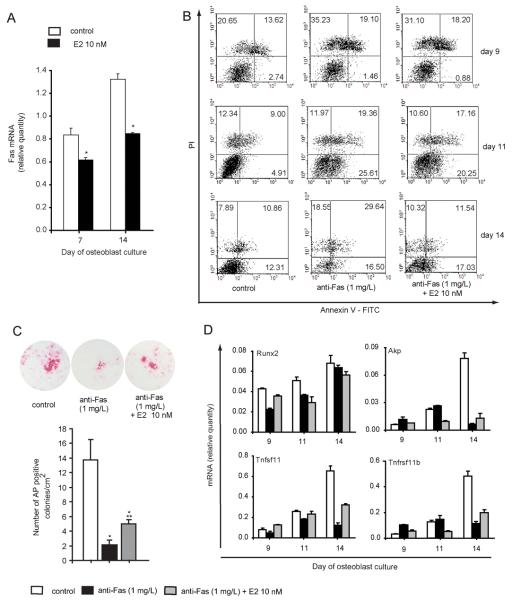Figure 5. Estradiol modifies the effect of Fas on osteoblast differentiation and apoptosis.
Osteoblastogenic cultures were prepared from the bone marrow of wt mice. Osteoblastogenic cultures were treated with 0.5 μg/mL of anti-Fas antibody (Jo-1) and 5 μg/mL protein G at days 8, 10, and 13. Cells treated with 0.5 μg/mL normal hamster IgG and 5 μg/mL protein G were used as negative controls. 10 nM estradiol was added to osteoblastogenic cultures with each medium exchange and a corresponding volume of ethanol (which was used as a solvent for estradiol) was used as a negative control. (A) Expression of Fas mRNA in osteoblastogenic cultures after treatment with estradiol. Values were calculated according to the standard curve of gene expression in the calibrator sample (cDNA from osteoblastogenic cultures) and normalized to the expression of the gene for β-actin (“endogenous” control). Cell treatment was performed in triplicate wells and results are arithmetic mean±SD of relative Fas mRNA expression in each well (* p≤ 0.05 vs. control group, t-test). (B) Representative data of the Annexin V-FITC/PI labeling of apoptotic cells. Numbers represent percentages of cells in each quadrant. Apoptotic cells are in the lower right quadrant, and dead cells are in the upper right quadrant. (C) Effect of estradiol on the number of osteoblast colonies after treatment with anti-Fas antibody. Histograms represent the number of osteoblast colonies per square centimeter plate surface (mean±SD, n=3; * p<0.05 vs. control group, ** p<0.05 vs. anti-Fas and control group, t-test). Figures show representative osteoblast colonies on day 14 of cell culture, stained red for AP. (D) Gene expression pattern during in vitro osteoblastic differentiation. Values were calculated according to the standard curve of gene expression in the calibrator sample (cDNA from osteoblastogenic culture) and normalized to the expression of the gene for β-actin (“endogenous” control). Results are arithmetic mean±SD of real-time PCR reaction duplicates prepared from the same sample of the representative experiment. Akp, alkaline phosphatase gene; AP, alkaline phosphatase; Runx2, runt-related transcription factor 2; Tnfsf11, tumor necrosis factor receptor superfamily member 11, RANKL; Tnfrsf11b, tumor necrosis factor receptor superfamily member 11, OPG.

